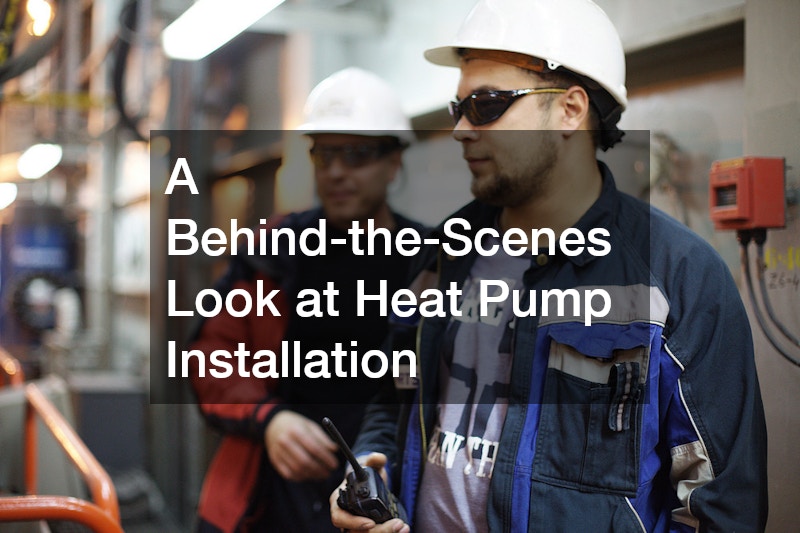In today’s world, sustainable and energy-efficient solutions are increasingly sought after for both residential and commercial settings. Among the innovative technologies that have come to the forefront is the heat pump—a highly efficient alternative to traditional heating and cooling systems. This article provides an in-depth, behind-the-scenes look at heat pump installation, emphasizing the intricacies and nuances involved in setting up these systems.
Heat pump installation is a meticulous process that requires careful planning and execution. From the selection of the right type of heat pump to the precise placement of the unit, each step plays a critical role in ensuring optimal performance and longevity of the system.
By diving into the details of installation, we aim to shed light on the skills and expertise required to successfully execute such projects.
This comprehensive examination will help homeowners and professionals alike better understand the value and complexity inherent in heat pump installation. As we explore the various elements of the process, the goal is to impart valuable insights and foster an appreciation for the craftsmanship involved. Join us as we take a look behind the curtains at what makes heat pump installations successful and efficient.
Choosing the Right Heat Pump
The first step in any heat pump installation is selecting the appropriate model and type for the space. There are several types of heat pumps, including air-source, ground-source (geothermal), and water-source, each suited to different environments and uses. The choice largely depends on factors such as climate, energy efficiency goals, and the specific heating and cooling needs of the property.
Professional installers often conduct a detailed evaluation to recommend the best fit. This includes assessing the property’s layout, insulation levels, and existing systems. By carefully considering these variables, they aim to maximize efficiency and ensure the system complements the unique attributes of the home or building.
Additionally, today’s market offers models with a variety of advanced features, such as variable speed compressors and smart thermostats. These enhancements further influence the selection process, as they can significantly improve energy savings and user convenience. Installers must keep pace with evolving technologies to provide the most up-to-date solutions.
Preparing for Installation
Once the right heat pump has been selected, preparation for installation begins. This phase involves a thorough inspection of the installation site to identify any potential obstacles or challenges. Installers must ensure there is adequate space for the equipment and that the area is free from hazards like electrical wiring or plumbing that might interfere with the installation process.
Alongside site preparation, securing any necessary permits is an essential component of this stage. Local regulations may mandate specific guidelines regarding energy systems, and compliance is crucial to avoid legal complications down the road. Professional installers are well-versed in these requirements and navigate the paperwork efficiently, easing the burden on property owners.
Additionally, contractors will plan the logistics of installation, coordinating timelines and ensuring that all necessary tools and parts are on hand. This strategic organization minimizes delays and facilitates a smoother installation process. The preparatory steps set the foundation for the successful execution of the project, mitigating potential setbacks.
Reviewing the Installation Process
Actual installation begins once all preparations are complete. Firstly, installers position the heat pump unit in the designated area. For air-source heat pumps, this often involves placing the unit outside, securely anchoring it, and ensuring proper airflow clearance is maintained around the system.
Next, technicians handle the electrical connections, which is a delicate task requiring precision and adherence to safety standards. It involves wiring the system into the property’s electrical grid and configuring it for optimal performance. This stage is critical as improper connections can compromise efficiency and damage the system.
Finally, installers test the system to confirm its functionality. They calibrate settings, run performance checks, and make necessary adjustments. This thorough verification process ensures that the heat pump delivers as expected, providing reliable heating and cooling for the space.
Ultimately, a heat pump installation offers numerous benefits, including increased energy efficiency, reduced utility bills, and a smaller carbon footprint. With proper installation and maintenance, it can serve as a reliable source of comfort for many years. By unlocking the secrets behind the process, we gain insight into the craftsmanship and dedication required to optimize this technology.
.





